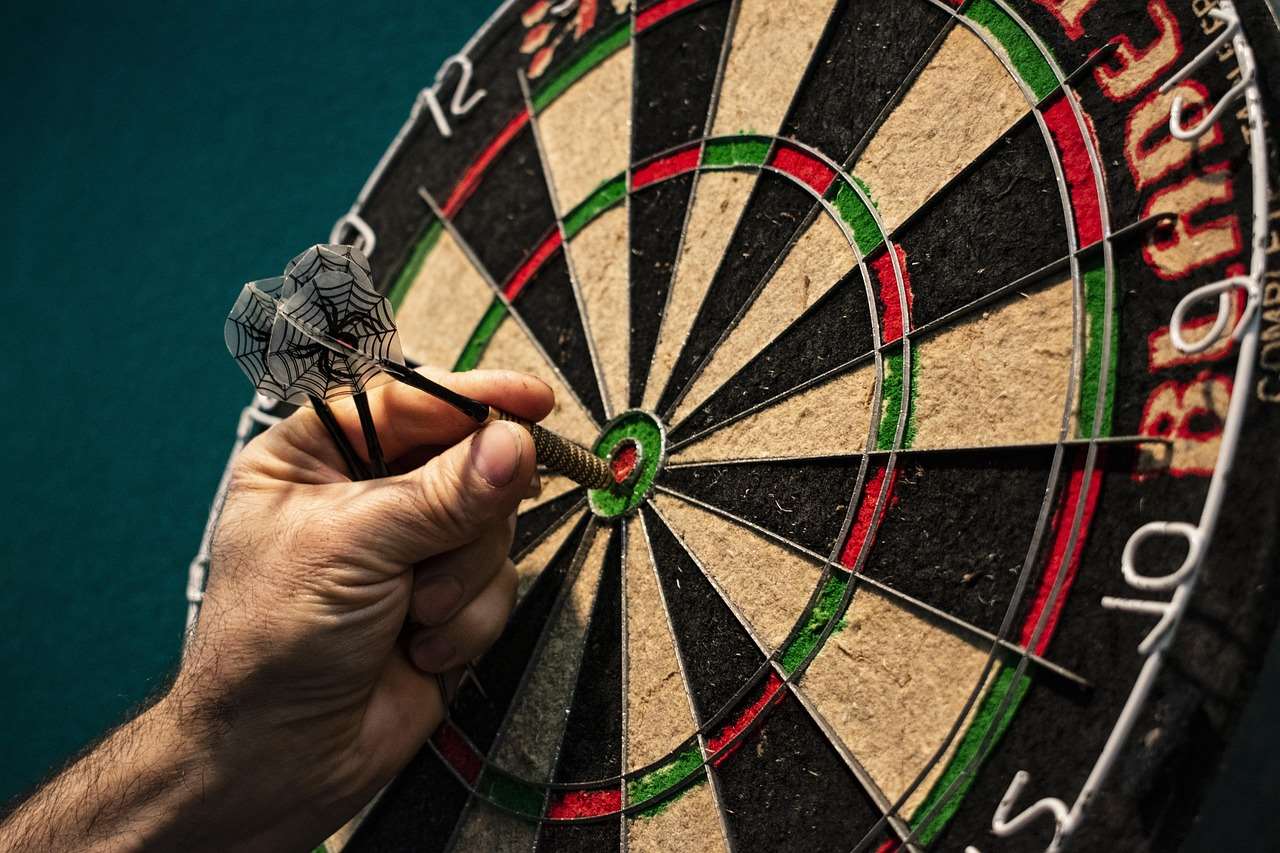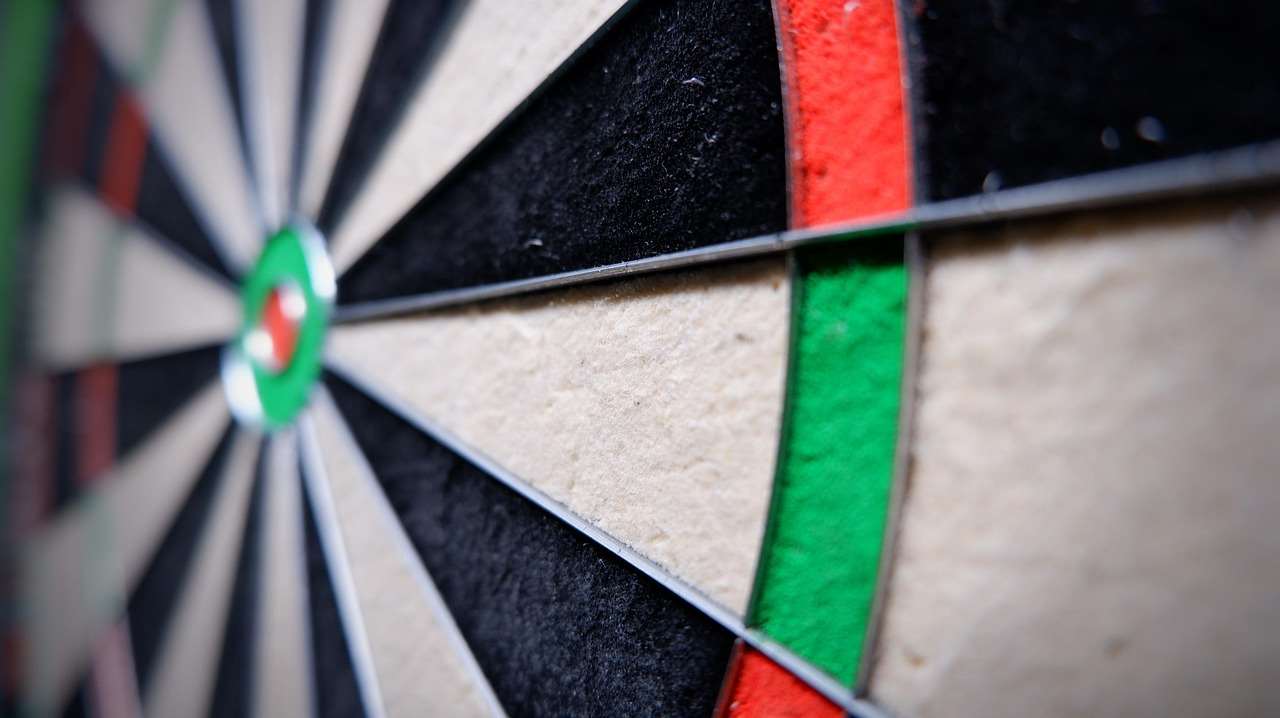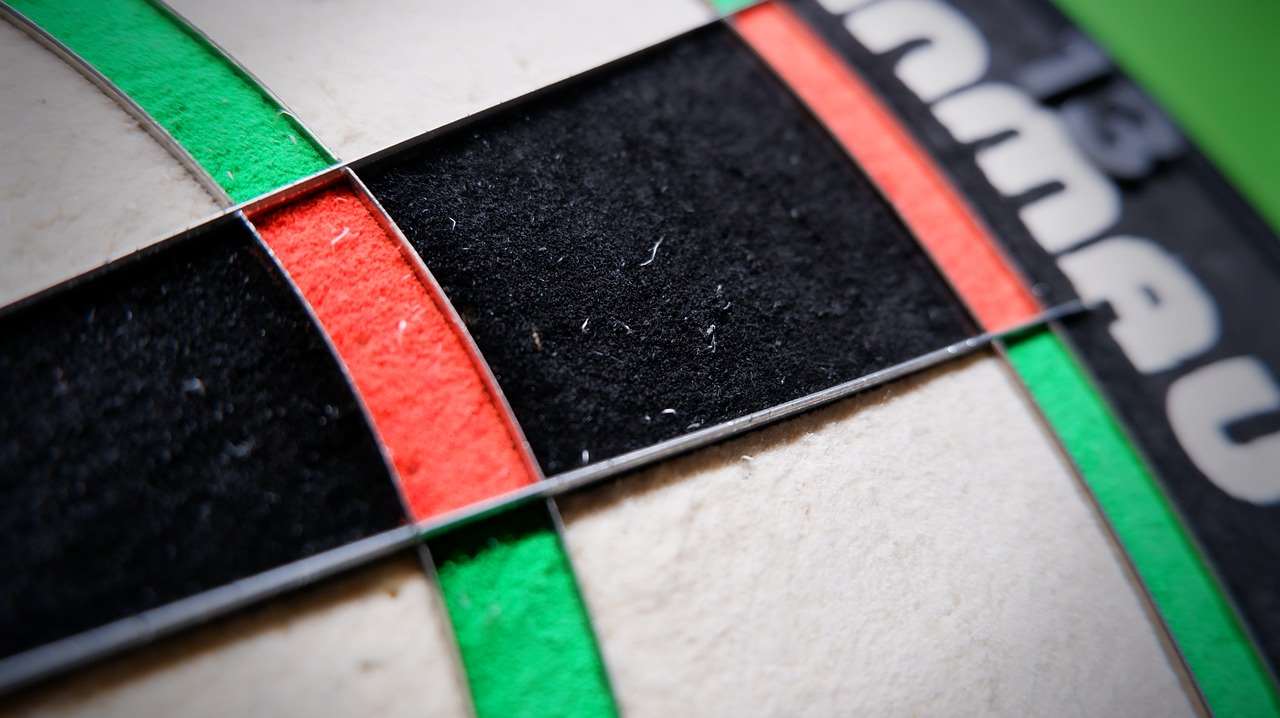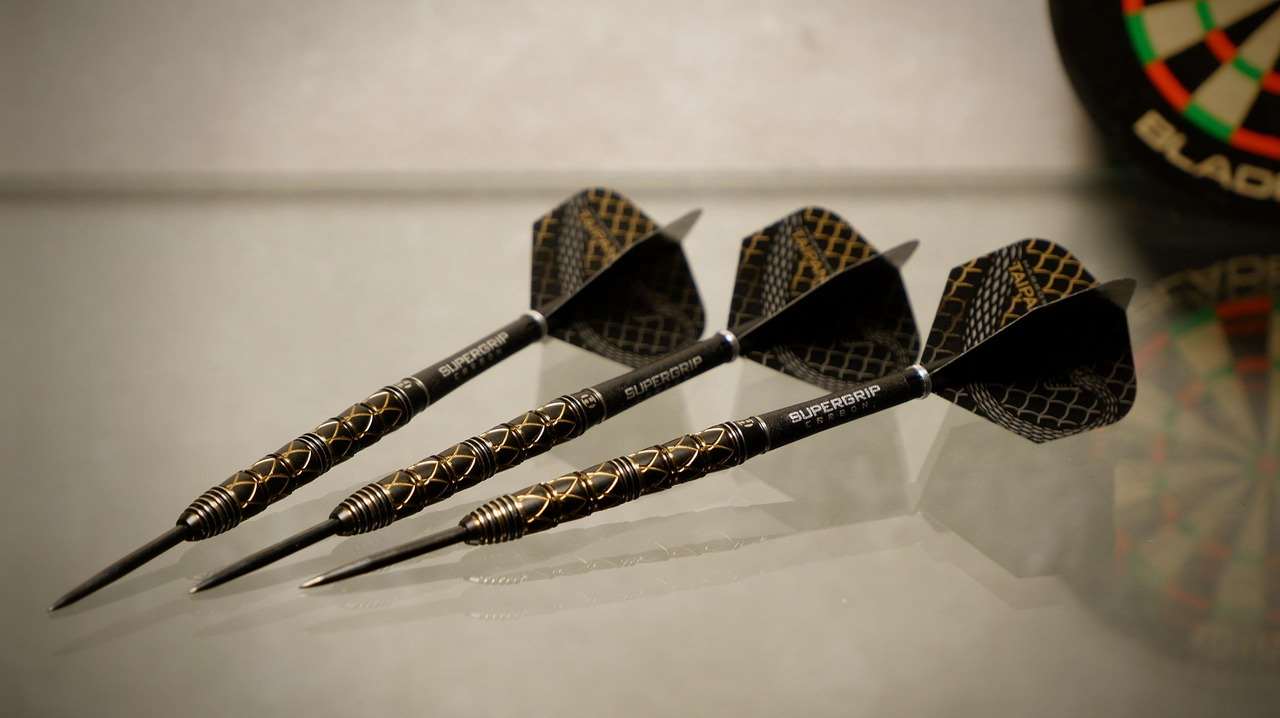Want to master the game? This article is your complete guide on **hoe darten**, covering everything from the basics of stance and grip to advanced techniques like calculating outs and choosing the right equipment. We’ll break down the fundamentals and offer tips to improve your accuracy and strategy, so you can start hitting those bullseyes consistently.
⚠️ Still Using Pen & Paper (or a Chalkboard)?! ⚠️
Step into the future! The Dart Counter App handles all the scoring, suggests checkouts, and tracks your stats automatically. It's easier than you think!
Try the Smart Dart Counter App FREE!Ready for an upgrade? Click above!
Hoe Darten: Mastering the Fundamentals
Before you can start thinking about triple 20s and perfect games, you need to understand the core principles of **hoe darten**. This involves perfecting your stance, grip, and throwing motion. Let’s break down each element:
Stance
Your stance provides the foundation for a consistent throw. There are three primary stances:
- Parallel Stance: Both feet are aligned parallel to the oche (the throwing line). This provides stability but can restrict your throwing arm.
- Open Stance: Your front foot is slightly angled towards the board. This opens up your throwing arm and allows for a smoother release.
- Closed Stance: Your front foot is angled away from the board. This stance is less common but can be comfortable for some players.
Experiment with each stance to find what feels most natural and allows you to maintain balance throughout your throw. Remember to keep your weight balanced between both feet.

Grip
The grip is crucial for control and accuracy. A comfortable and consistent grip will help you repeat your throw with minimal variation. Here are some common grip styles:
- Two-Finger Grip: This grip provides a lot of control and is popular among beginners.
- Three-Finger Grip: Offers a balance of control and power. Many professional players use this grip.
- Four-Finger Grip: Provides a secure hold, suitable for players who prefer a heavier dart.
Regardless of your grip style, ensure you’re not gripping the dart too tightly. A relaxed grip allows for a smoother release and reduces tension in your arm. Also, consider the target darts shaft length when optimizing your grip.
Throwing Motion
The throwing motion should be fluid and controlled. Avoid jerky movements or excessive wrist action. Break down your throw into these key phases:
- Setup: Aim at your target and bring the dart to eye level.
- Drawback: Slowly draw the dart back, keeping your elbow high and close to your body.
- Release: Extend your arm towards the target, releasing the dart just before your arm is fully extended. Follow through with your arm motion to ensure a smooth release.
Practice your throwing motion repeatedly, focusing on consistency and accuracy. Record yourself and analyze your technique to identify areas for improvement. Paying attention to the **darts line up tonight on tv live** can offer observational learning too!
Choosing the Right Darts Equipment
Selecting the right darts equipment can significantly impact your performance. Consider these factors when choosing your darts:
Weight
Darts come in a range of weights, typically between 20 and 26 grams. Lighter darts are easier to control, while heavier darts are less affected by wind resistance. Experiment with different weights to find what feels most comfortable and allows you to throw consistently. Many beginners find that a dart around 22-24 grams is a good starting point.
Barrel Material
The barrel is the main body of the dart and is typically made from brass, nickel silver, or tungsten. Tungsten darts are denser, allowing for a slimmer barrel and a closer grouping of darts on the board. Brass darts are more affordable but tend to be bulkier. Nickel silver darts offer a middle ground in terms of price and performance.
Shafts and Flights
Shafts and flights affect the dart’s aerodynamics and stability. Shorter shafts provide more control, while longer shafts offer more stability. Flights come in various shapes and sizes, each affecting the dart’s trajectory. Standard flights are the most common, while smaller flights are often used for heavier darts. Don’t overlook cool options for your game like the dart flights star wars.

Advanced Techniques: Scoring and Strategy
Once you’ve mastered the fundamentals, you can start focusing on advanced techniques to improve your scoring and strategy.
Calculating Outs
Calculating outs, or checkouts, is essential for winning games. This involves determining the optimal combination of darts to reach zero from your current score. Familiarize yourself with common checkout combinations, such as 170 (T20, T20, Bullseye) and 164 (T20, T18, Bullseye). Practicing your outs regularly will help you become more efficient and decisive during matches. Check out resources on how to learn dart finishes.
Strategic Play
Strategic play involves making informed decisions about where to aim based on your current score and your opponent’s position. For example, if you need a high score to catch up, you might target the triple 20. If you need to set up a checkout, you might aim for a specific number to leave yourself with a favorable combination. Understanding percentages and probabilities can also help you make strategic decisions.
Practice Drills
To improve your accuracy and consistency, incorporate specific practice drills into your routine. Some effective drills include:
- Around the Clock: Start at 1 and work your way around the board to 20, hitting each number three times.
- Shanghai: Aim for a single, double, and triple of the same number in three consecutive throws.
- Bob’s 27: Start with a score of 27 and try to reduce it to zero in nine darts, aiming for specific doubles and triples.
Regular practice, even for short periods, will help you develop muscle memory and improve your overall performance. You can even use a Best darts scoring app to track your progress.

Common Mistakes and How to Avoid Them
Even experienced players can fall into common traps that hinder their performance. Here are some common mistakes and how to avoid them:
Inconsistent Stance
A shaky or unbalanced stance can throw off your entire throw. Make sure you have a stable base and that your weight is evenly distributed. Practice your stance until it becomes second nature.
Gripping Too Tightly
A tight grip creates tension in your arm and reduces your control. Relax your grip and focus on letting the dart flow naturally from your hand.
Rushing the Throw
Rushing your throw can lead to inaccuracies. Take your time, focus on your target, and follow through with your motion.
Ignoring Follow-Through
The follow-through is crucial for maintaining a consistent trajectory. Make sure you fully extend your arm and follow through with your wrist to ensure a smooth release.
By being aware of these common mistakes and actively working to correct them, you can significantly improve your accuracy and consistency.
The Mental Game of Darts
Darts is not just a physical game; it’s also a mental game. Your mental state can significantly impact your performance. Here are some tips for developing a strong mental game:
Focus and Concentration
Maintain focus and concentration throughout your matches. Avoid distractions and stay present in the moment. Visualize your target and believe in your ability to hit it.
Positive Self-Talk
Use positive self-talk to build confidence and stay motivated. Replace negative thoughts with positive affirmations. Believe in yourself and your abilities.
Dealing with Pressure
Learn to manage pressure situations effectively. Practice under pressure to simulate real-game scenarios. Develop strategies for staying calm and focused when the stakes are high.

Learning from Mistakes
Don’t dwell on mistakes. Instead, learn from them and use them as opportunities for growth. Analyze your performance and identify areas for improvement.
By cultivating a strong mental game, you can overcome challenges and perform at your best, even under pressure.
The Social Aspect of Darts
Darts is often played in a social setting, whether it’s at a local pub or a competitive tournament. Embracing the social aspect of the game can enhance your enjoyment and provide opportunities to connect with other players.
Joining a League
Joining a darts league is a great way to meet new people, improve your skills, and compete in a friendly environment. Leagues offer a structured format and provide opportunities to play against players of different skill levels.
Attending Tournaments
Attending darts tournaments can be an exciting experience. You’ll have the opportunity to watch professional players in action, meet other enthusiasts, and test your skills against a larger pool of competitors. Be sure to check who ashley coleman darts will be at the next one you plan on attending.
Practicing with Friends
Practicing with friends can be a fun and motivating way to improve your game. You can challenge each other, share tips and strategies, and enjoy the camaraderie of playing together. Just remember, the invention of the darts game invented was to share a few laughs!
By embracing the social aspect of darts, you can enhance your overall experience and create lasting memories.
Finding the Right Darts Community
Connecting with other darts enthusiasts can significantly improve your game and your enjoyment of the sport. Whether you are looking into how to use a darts statief, or are just getting started, a community can help.
Online Forums and Groups
Online forums and social media groups dedicated to darts provide a platform for sharing tips, asking questions, and connecting with other players from around the world. These communities can be a valuable resource for learning about new techniques, equipment, and upcoming events.
Local Darts Clubs
Local darts clubs offer a more personal and interactive experience. You can attend club meetings, participate in tournaments, and receive coaching from experienced players. These clubs often provide a supportive and welcoming environment for players of all skill levels.

Following Professional Players
Following professional players on social media and watching their matches can provide inspiration and valuable insights into the game. You can learn from their techniques, strategies, and mental approaches.
Hoe Darten: Conclusion
Mastering **hoe darten** requires dedication, practice, and a willingness to learn. By focusing on the fundamentals of stance, grip, and throwing motion, choosing the right equipment, and developing your scoring and strategic skills, you can significantly improve your game. Remember to avoid common mistakes, cultivate a strong mental game, and embrace the social aspect of the sport. Use these strategies, and you will become a formidable player in your own right. Now, pick up your darts and start practicing!
Hi, I’m Dieter, and I created Dartcounter (Dartcounterapp.com). My motivation wasn’t being a darts expert – quite the opposite! When I first started playing, I loved the game but found keeping accurate scores and tracking stats difficult and distracting.
I figured I couldn’t be the only one struggling with this. So, I decided to build a solution: an easy-to-use application that everyone, no matter their experience level, could use to manage scoring effortlessly.
My goal for Dartcounter was simple: let the app handle the numbers – the scoring, the averages, the stats, even checkout suggestions – so players could focus purely on their throw and enjoying the game. It began as a way to solve my own beginner’s problem, and I’m thrilled it has grown into a helpful tool for the wider darts community.